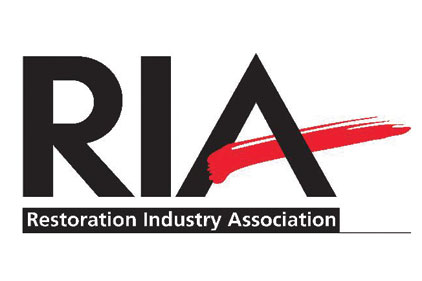What Has RIA Done for the Industry Lately?
When an organization has been around for 67 years, it’s easy to forget what it has accomplished during that time and to take its value and contributions for granted
 The Restoration Industry Association was founded in 1946 as the National Institute of Rug Cleaners and over the years it has gone through several incarnations before being rebranded to its current name in 2007. When an organization has been around for 67 years, it’s easy to forget what it has accomplished during that time and to take its value and contributions for granted. Here are some of the actions RIA has taken to better the industry over the last almost 70 years.
The Restoration Industry Association was founded in 1946 as the National Institute of Rug Cleaners and over the years it has gone through several incarnations before being rebranded to its current name in 2007. When an organization has been around for 67 years, it’s easy to forget what it has accomplished during that time and to take its value and contributions for granted. Here are some of the actions RIA has taken to better the industry over the last almost 70 years.
- 1960: RIA launches the Voice magazine, which would eventually become Cleaning & Restoration magazine, the longest running trade publication for the industry with 22 awards for editorial and graphic design excellence.
- 1971: Several organizations combined under the NIRC banner: the Carpet and Upholstery Cleaning Association; the Drapery Specialists Institute; Institutional Carpet Maintenance Council; and the National Institute of Fire Restorers.
- 1980: The first Certified Restorer candidates receive the CR certification. Since then, more than 600 individuals have received the certification.
- 1990s: RIA formed the Water Loss Institute, National Institute of Disaster Restoration, the Mechanical Systems Hygiene Institute, and the Carpet and Upholstery Cleaning Institute.
- 1996: RIA introduces the Phoenix Awards recognizing innovation in restoration and reconstruction for the industry.
- 2000: The Water Loss Specialist (WLS) certification was launched.
- 2003: The Association publishes the best practices for mold remediation.
- 2005: RIA forms the Catastrophe Task Force to network restoration contractors, educate residents and work with government agencies following Hurricane Katrina. The information created by the task force has educated hundreds of thousands of consumers following wildfires, floods, hurricanes, tornadoes and other major perils.
- 2007: RIA supports the Consumer Freedom of Choice legislation in Colorado, which gives consumers the freedom to select whatever restoration firm they want to use following a covered loss.
- 2009: Introduces the RIA Glossary of Restoration Terms, which defines the terminology frequently used in work orders, contracts, standards, guidelines and other industry-related documents.
- 2009: RIA introduces educational webinars to the restoration industry.
- 2010: RIA technical library reaches 1,500 articles spanning decades of research and industry information.
- 2012: American National Standards Institute recognizes the IESO/RIA 6001 Standard for the Evaluation of HVAC Systems Following a Fire as an ANSI standard.
- 2012: RIA introduced standardized contracts to the industry so restoration contractors can use similar documents for services provided across the country.
- 2012: RIA’s Board of Directors created the Restoration Industry Legal Fund to address a number of issues that impact RIA members and the entire industry.
- 2012: The Property Industry Conference (PIC) selects RIA as the meeting planner for the newly formed organization whose goal is to promote collaboration between all facets of the damage insurance restoration industry.
- 2012: Work began on the industry’s first fire damage standard to determine whether or not a structure or contents have been impacted by a fire. The standard will be available for public comment in the coming months. The next phases of the standard will address the cleaning and restoration of structures and impacted contents.
- 2013: RIA filed a lawsuit to invalidate six of the seven patents held collectively by Thermapure and David Hedman.
- 2013: RIA creates the Canadian Council to better serve RIA members across Canada.
- 2014: RIA will begin working on a standard that addresses the restoration, remediation & cleaning protocols for biological infectious agents.
Trade associations provide education for their members and others in the industry, keep them abreast of legislation and regulations that will impact their ability to do business in the marketplace, create standards to provide guidance and enable individuals to accomplish collectively what they could not individually. This list represents only a fraction of the accomplishments over almost seven decades. For more information, visit www.restorationindustry.org.
Looking for a reprint of this article?
From high-res PDFs to custom plaques, order your copy today!






